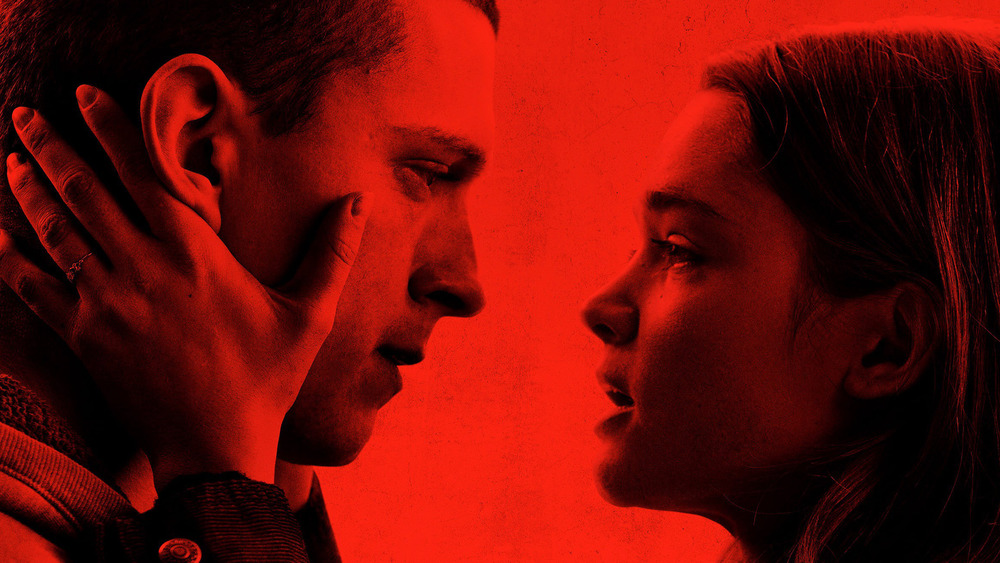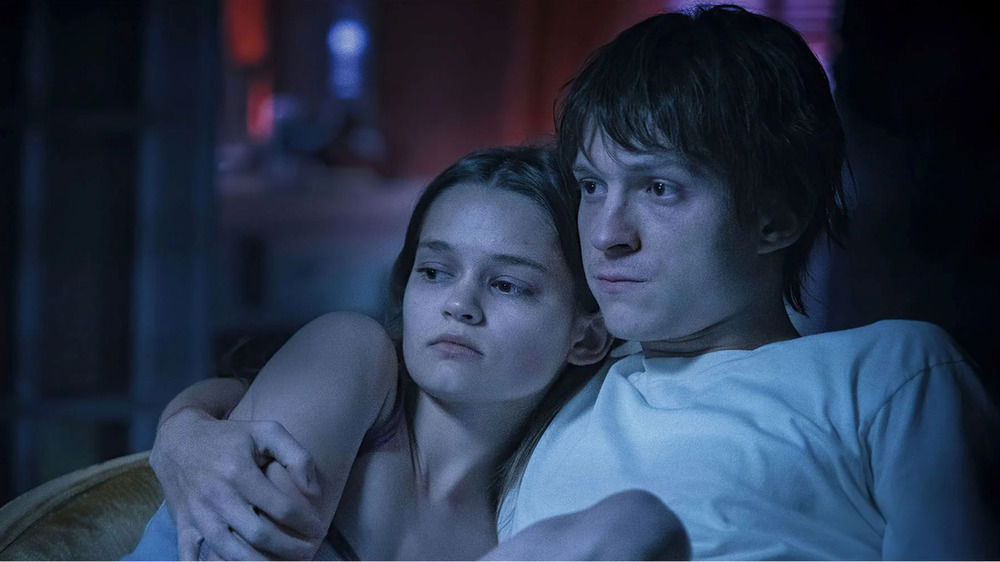Why Cherry's Ecstasy Scene Means More Than You Think - Exclusive
Given that the Russo brothers have spent the past several years working in the VFX-heavy, fantastical world that is the Marvel Cinematic Universe, one might be forgiven for assuming that their new movie Cherry, which documents one man's descent into opioid addiction, wouldn't measure up in terms of visual imagination. While there's certainly not a CGI alien to be seen in Cherry, the film does come with a highly distinct cinematic style that elevates it above other character-driven dramas. Divided into chapters, Cherry makes effective use of elements like different aspect ratios and lenses to convey the unique perspective of each stage in its title character's journey.
One of the most striking sequences in the film occurs when Cherry, played by Tom Holland, takes ecstasy and has an encounter with his love interest (and later wife) Emily, portrayed by Ciara Bravo. Incorporating infrared technology and 3D camera rigs, veteran cinematographer Newton Thomas Sigel gives the scene a gauzy, washed-out look that places viewers squarely in the serotonin-flooded perspective of its protagonist.
In an exclusive chat about Cherry with Sigel, Looper broke down the movie's ecstasy scene and its impact on and importance to the story and the character.
Newton Thomas Sigel on bringing Cherry back to Earth
The sequence in question happens early in the film. Holland's Cherry is a young, naive college student already under the influence of Xanax. He's given ecstasy on top of it, and so is in quite the state when he crosses paths with Emily, who he'd previously met at school, at a party. "He's completely infatuated with her," says Sigel. "So what we wanted to do was find a way to have him, in this sort of drugged-out state, see Emily and begin to talk to her. And then as he does, [we wanted] her to sort of ground him, bringing him back down, almost like a balloon that's floating away and she's grabbed the string and she's pulling it down."
To achieve this effect, Sigel shot the scene with multiple cameras, allowing the Russos and Cherry editor Jeff Groth to create a sort of transitional effect as Cherry's state of mind changes over the course of his conversation with Emily.
"The infrared was done with an infrared camera and a color camera, and they're shooting the same image in a 3D rig," Sigel explains. "And what that did for us was it allowed us to go from this completely infrared state where he's really sort of tripped out, and then as he meets her and in the course of the conversation, the color begins to come back in, and it begins to bring the balloon back down to Earth. Her warmth and her radiance brings his color back into him. By the end of the scene, it's relatively normal."
Sigel credits Groth with piecing together the cinematographer's shots in a way that broke with the dialogue's narrative through-line to truly convey Cherry's point of view. "Our editor, Jeff Groth, did a great job, too, of working with these little pieces I shot to kind of step outside the narrative, conversational dialogue that was happening and put you into the internal subjective thought bubble of Cherry," Sigel says. "You see it in these infrared shots of him touching her jacket. You see it even on Emily when, as the dialogue progresses, there's a closeup of her that is completely non-verbal, but the dialogue is still going on. And that's a technique that I find very effective, and I really liked the way that Jeff and the Russos put that together."
You can take in this scene — and the rest of Sigel's work on Cherry — by watching the film on Apple TV+ now.

